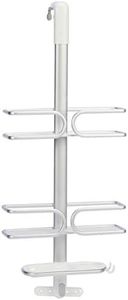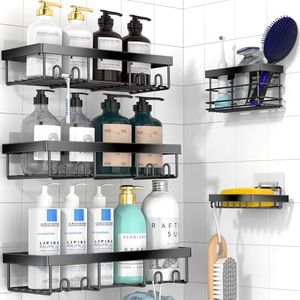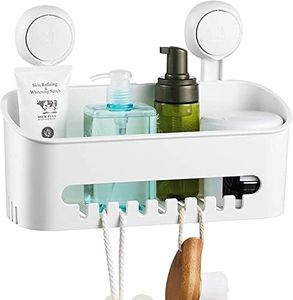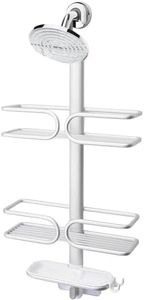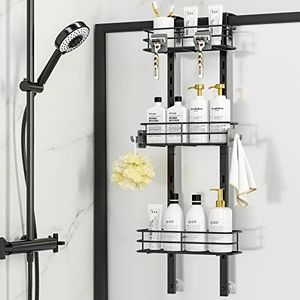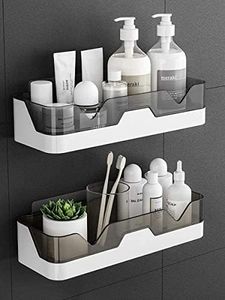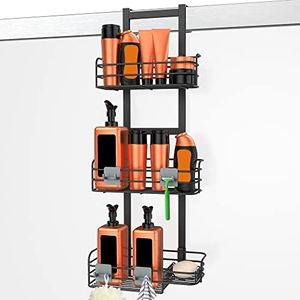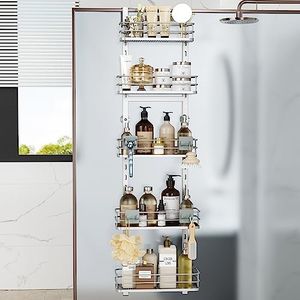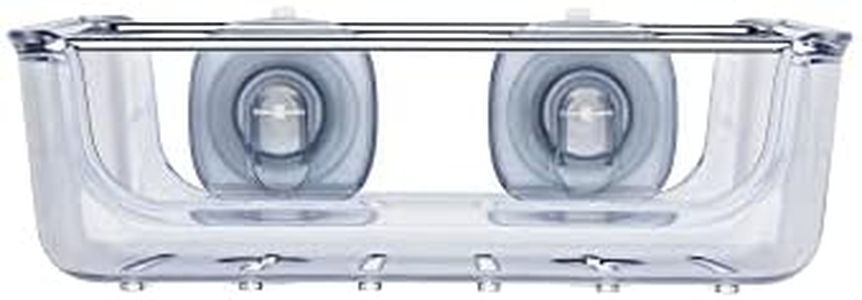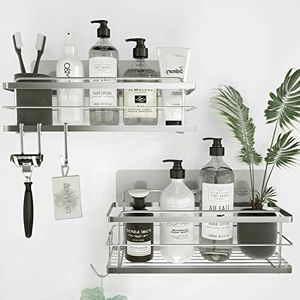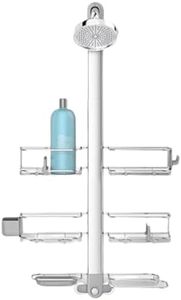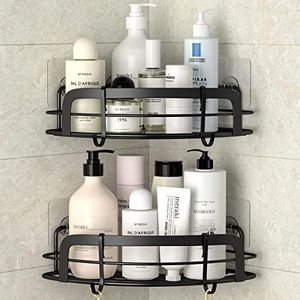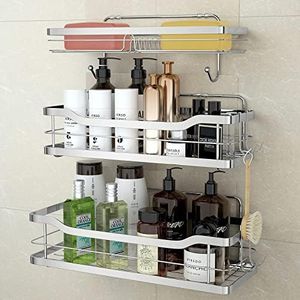We Use CookiesWe use cookies to enhance the security, performance,
functionality and for analytical and promotional activities. By continuing to browse this site you
are agreeing to our privacy policy
10 Best Shower Shelves
From leading brands and best sellers available on the web.Buying Guide for the Best Shower Shelves
Choosing the right shower shelf can make your bathroom more organized, stylish, and comfortable. When picking a shower shelf, you'll want something that not only holds your essentials but also fits your space and daily routine. There are several types of shelves, each with different materials, installation methods, and storage capacities. Understanding these details will help you find a shelf that suits your needs and keeps your bathroom clutter-free. Here’s what to focus on when evaluating shower shelves:MaterialMaterial refers to what the shelf is made from and is essential because it impacts durability, appearance, and how easy the shelf is to clean. The most common materials are stainless steel, plastic, glass, and aluminum. Stainless steel resists rust and suits modern, humid environments, but can be heavier. Plastic is lighter, less expensive, and easy to maintain, but sometimes less durable. Glass offers a sleek look but may need more care to avoid breakage. Pick the material based on the humidity in your bathroom and your preference for style versus practicality.
Mounting TypeMounting type is about how the shelf is attached to the wall or surface. The main options are suction cups, adhesive, or screw-mounted. Suction cup shelves are easy to install and move but might not hold heavy items and can lose grip over time. Adhesive shelves offer a stronger, semi-permanent hold without drilling, ideal for renters, but may still have weight limits. Screw-mounted shelves are the most stable and can carry more weight, but require making holes in the wall. Choose the mounting type based on whether you want easy installation, a more permanent fixture, or strength to support heavier bottles.
Size and Storage CapacityThis refers to the dimensions of the shelf and how much it can hold. Smaller shelves are great for a few essentials and tight spaces, while larger or tiered shelves can store more items, which can help families or those with many products. Measure your available shower space before making a decision. Think about how many bottles, soaps, or tools you use daily to pick the right size and avoid over-cluttering your shower.
Drainage DesignDrainage design determines how well water flows off the shelf. Good drainage is important to keep items dry, prevent mold, and make cleaning easier. Some shelves have slats or holes for fast drainage, while others have solid surfaces that may collect water. If your shower gets very wet, opt for shelves with more gaps and openings to help water escape easily.
Shape and PlacementShape and placement relate to how the shelf fits into your shower. Corner shelves fit neatly into shower corners and save space, while straight or curved shelves may line along walls. Some are designed to hang from the showerhead or door. Think about where you need storage—corners, under the showerhead, or along a wall—and choose a shape that fits the layout and gives you easy access to your bath items.
Maintenance and CleaningThis is about how easy the shelf is to keep clean and looking good. Smooth surfaces and simple designs without too many nooks make cleaning easier and reduce the chance of soap scum or mildew building up. Materials like stainless steel or plastic are usually easier to wipe down than textured or painted finishes. Consider how much time you want to spend on upkeep and pick a shelf that matches your cleaning habits.
